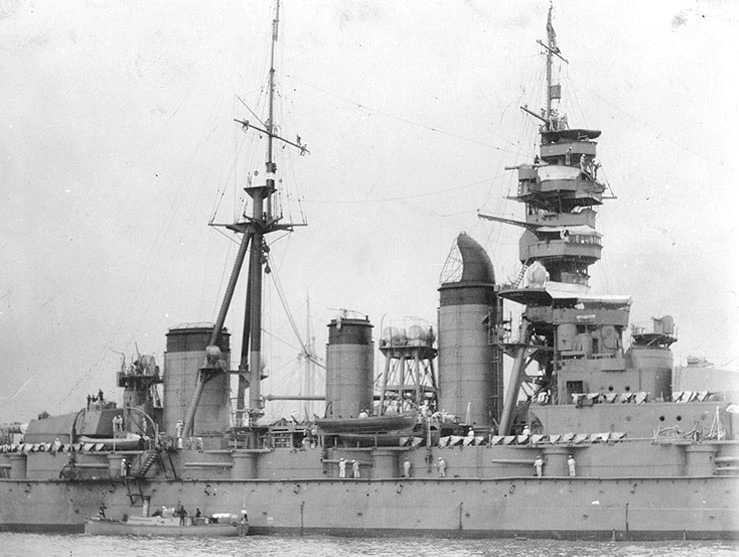
These guns were originally designed by Vickers as secondary weapons for the battlecruiser Kongô, which was built in Britain by Vickers-Armstrong (Barrow). The Japanese version was designed by Engineer Hata Chiyokichi and adopted in 1912. These Japanese-built guns were used for the remainder of the Kongô class and on the Fuso class. Vickers guns were designated as Mark II while those built in Japan were designated as Mark III. A shorter-barreled version was produced later and this was designated as the Mark IV.
Guns were redesignated in centimeters on 5 October 1917.
When the Kongô and Fuso classes were modernized during the 1930s, some of the 15 cm (6.0") guns and all of their 8 cm/40 (3") AA guns were replaced by the new 12.7 cm/40 (5") DP. Some of the removed 15 cm guns were then used to arm merchant cruisers just before the start of the Pacific War. The remaining guns plus spares and additional guns removed from the capital ships during the war armed the Agano class light cruisers in twin mountings. Some coast defense batteries at Guam were also equipped with these weapons.
The Vickers guns were of wire-wound construction but the Japanese ones were of three-layer, built-up construction. All used screw breech-blocks.
Actual bore size of all guns was 15.24 cm (6.0"). Mark No. IV guns were 10.5 cm (4.1") shorter than earlier models.
The data below represents Mark I through III guns unless otherwise noted.
| Designation | 6"/50 (15.2 cm) Vickers Mark M (British built guns)
6"/50 (15.2 cm) Mark II (British built guns) 6"/50 (15.2 cm) Mark III (Japanese built guns) 6"/50 (15.2 cm) Mark IV (short-barrel Japanese built guns) 15 cm/50 (6") 41st Year Type (Model 1908) Official Designation: 50 caliber 41st Year Type 15 cm Gun |
|---|---|
| Ship Class Used On | Kongô, Fuso and Agano classes
Planned for projected light cruisers of the 810 and 5037 classes |
| Date Of Design | about 1910 |
| Date In Service | 1913 |
| Gun Weight | 18,430 lbs. (8,360 kg) |
| Gun Length oa | 310.1 in (7.876 m) |
| Bore Length | 300.0 in (7.620 m) |
| Rifling Length | 259.2 in (6.584 m) |
| Grooves | (42) 0.050 in deep x 0.300 in (1.27 mm x 7.62 mm) |
| Lands | 0.1488 in (3.78 mm) |
| Twist | Uniform RH 1 in 30 |
| Chamber Volume | 1,595 in3 (26.1 dm3) |
| Rate Of Fire | Theoretical: 10 rounds per minute
Effective: 5 - 6 rounds per minute |
| Type | Bag |
|---|---|
| Projectile Types and Weights | Common Type 0 HE 1: 100 lbs. (45.36 kg)
Common Type 4 HE 2: 100 lbs. (45.36 kg) ASW 3: 113.0 lbs. (51.3 kg) |
| Bursting Charge | Common Type 0 HE: 6.4 lbs. (2.9 kg)
Common Type 4 HE: 5.9 lbs. (2.7 kg) ASW: 6.4 lbs. (2.9 kg) |
| Projectile Length | Common Type 0 HE: 22.9 in (58.0 cm)
Common Type 4 HE: 22.5 in (57.2 cm) ASW: 23.6 in (60.0 cm) |
| Propellant Charge 4 | Common: 27.3 lbs. (12.4 kg) 37 DC
ASW: N/A |
| Muzzle Velocity | All except ASW: 2,790 - 2,805 fps (850 - 855 mps)
ASW: 820 fps (250 mps) |
| Working Pressure | 18.4 tons/in2 (2,900 kg/cm2) |
| Approximate Barrel Life | 500 - 600 Rounds |
| Ammunition supply per gun | Battleships: N/A
Agano class: 165 rounds |
- ^Common Type 0 HE was supplied with time fuzes for AA defense. US Naval Technical Mission to Japan report O-19 says that this round had an effective radius of 21.2 yards (19 m) but this seems to be optimistic.
- ^Common Type 4 used a base fuze and was for ASu.
- ^The flat-nosed ASW projectile was issued in 1943 following extensive testing. This is listed in O-19 as being able to penetrate a 0.3115 in (0.8 cm) plate of Ducol Steel (roughly equivalent to USN HTS) at a depth of 26 feet (8 meters). Range for this performance is not given. However, based upon other errors in this document, I would believe this to be an error in metric to English unit conversion and that the actual penetration value would more likely be 3.115 in (8.0 cm).
- ^The propellant charge was in one bag with a 2.1 oz (60 gm) black powder igniter.
| Elevation | Range | Striking Velocity | Angle of Fall |
|---|---|---|---|
| 2.7 degrees | 5,470 yards (5,000 m) | 1,739 fps (530 mps) | 3.8 |
| 8.0 degrees | 10,940 yards (10,000 m) | 1,148 fps (350 mps) | 12.5 |
| 15.0 degrees | 15,420 yards (14,100 m) | --- | --- |
| 17.5 degrees | 16,400 yards (15,000 m) | 1,050 fps (320 mps) | 28.0 |
| 30.0 degrees | 21,330 yards (19,500 m) | --- | --- |
| 34.0 degrees | 21,870 yards (20,000 m) | 1,050 fps (320 mps) | 52.0 |
| 45.0 degrees | 22,970 yards (21,000 m) | --- | --- |
| Elevation | Range |
|---|---|
| 45 degrees | 22,970 yards (21,000 m) |
| AA Ceiling at 55 degrees | 26,250 feet (8,000 m) |
| Elevation | Range |
|---|---|
| 40 degrees | 4,590 yards (4,200 m) |
Minimum range of ASW shell is given as 875 yards (800 m). Ranges less than this tended to ricochet.
| Designation | Single Pedestal Casemate
Kongô (16): Vickers P1 1a Fuso (16): N/A Two gun Mounts
|
|---|---|
| Weight | Single Mounts: N/A
Two-gun turrets: 72 tons (73 mt) |
| Elevation | Kongô and Fuso: -5 / +20 degrees as built, +30 degrees as modernized 3a Agano: -5 / +55 degrees |
| Elevation Rate | Single Mount: Manual operation, only
Twin Mount: 10 degrees per second |
| Train | Single Mount: About -70 / +70 degrees
Twin Mount: about -150 / +150 degrees |
| Train Rate | Single Mount: Manual operation, only
Twin Mount: 6 degrees per second |
| Gun recoil | N/A |
| Loading Angle | +7 degrees |
- ^Kongô had two more guns removed in early 1943 and a further four removed in January 1944. Haruna had six guns removed in March 1943. Removed guns were replaced with 12.7 cm/40 Type 89 and 25 mm AA guns.
- ^The twin gun mounts on the Agano class were not true turrets as they lacked a stalk. They were more of an enclosed gun house with a non-rotating handling room below. A central pivot ran down to the middle deck for mounts No. 1 and No. 3 and to the upper deck for mount No. 2. Shell rooms were located underneath the armored deck with the powder magazines beneath the shell rooms. The ammunition was moved manually between the magazines and the hoists. Propellant bags and projectiles were carried by the same bucket hoist and delivered in the vicinity of the handling rooms which were located on the middle deck for mounts 1 and 3 and on the upper deck for mount 2. Mounts 1 and 2 had two hoists while mount 3 had one hoist. From the hoists, ammunition was carried by hand through a flashtight door and into the handling room. From the handling rooms, projectiles were moved to the gunhouse via a pusher hoist while the propellant bags were pushed up by hand to the gunhouse. Loading was manual with fuzes being set by hand before loading. A fuze time receiver and fuze setting machine were located near the loading trays. The gunhouse was normally trained via electro-hydraulic motors, but it could be trained manually by two crewmen using a hand-worked system in case of an emergency. Guns were individually sleeved.
- ^Two guns were removed from the Kongô and Fuso classes during the 1930s rebuilds. The elevation of the remaining guns was increased to +30 degrees.
- Twin mount gun axes were 61 in (155 cm) apart.
- Gun mount protection on Agano class was 1.9 cm (0.75 inch) steel on all surfaces.
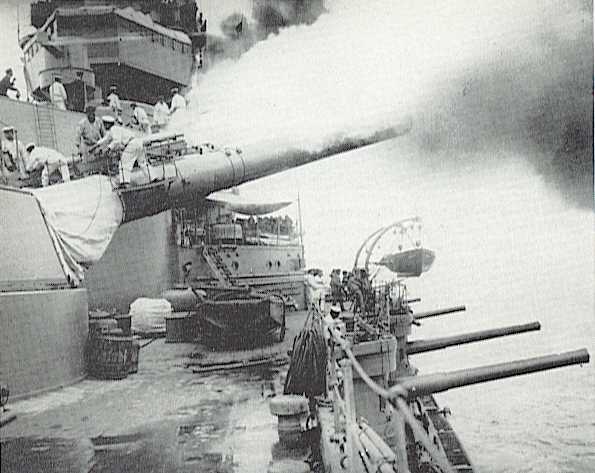
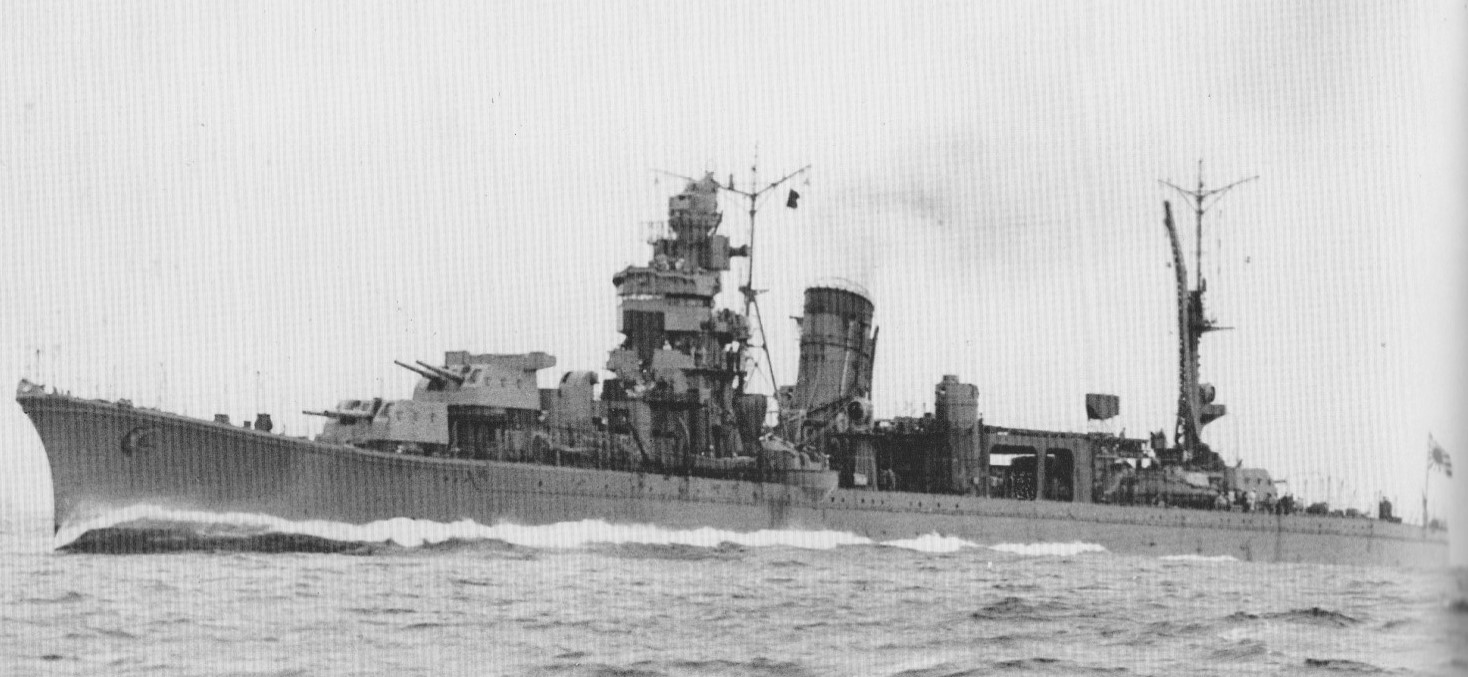
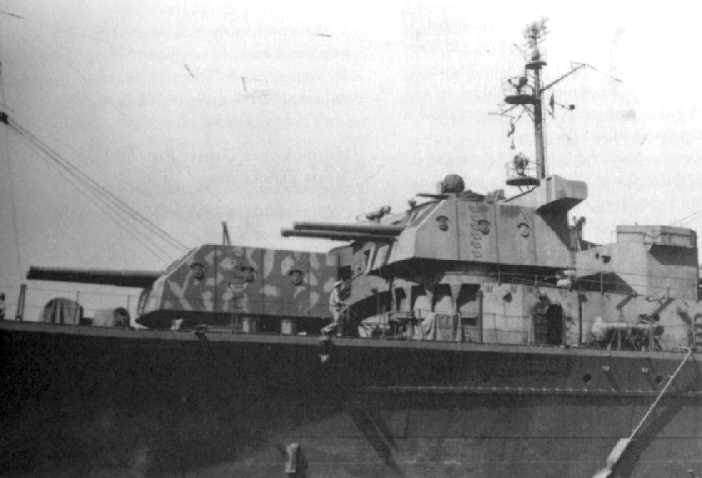
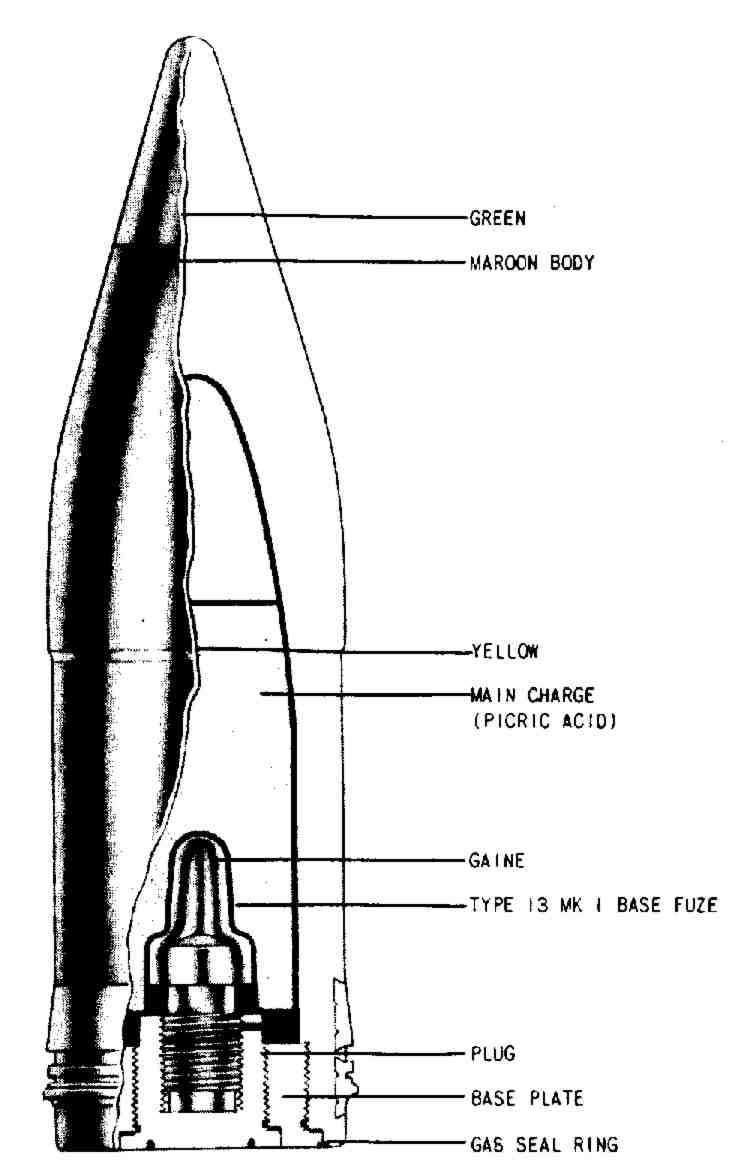
"Naval Weapons of World War Two" by John Campbell
"Imperial Japanese Navy Battleships 1941 - 45" by Mark Stile
"Japanese Warships of World War II" by A.J. Watts
"Japanese Cruisers of the Pacific War" by Eric Lacroix and Linton Wells II
"Cruisers of World War Two" and "Battleships of World War Two" both by M.J. Whitley
---
"The Japanese Warships of the Pacific War" by The Koku-Fan
---
US Naval Technical Mission to Japan report O-19: Japanese Projectiles General Types
US Naval Technical Mission to Japan report O-54(N): Japanese Naval Guns
26 August 2007 - Benchmark
15 June 2010 - Added picture of Common Type 4 projectile
27 May 2012 - Updated to latest template
08 February 2014 - Corrected dimension for ASW projectile
15 July 2015 - Added note regarding 1930s rebuilds and additional mounting information
02 December 2015 - Changed Vickers Photographic Archive links to point at Wayback Archive
19 August 2018 - Converted to HTML 5 format and added photograph of Noshiro
21 March 2019 - Added note regarding time fuzes on Common Type 0 HE
23 January 2020 - Minor changes
26 September 2020 - Minor changes
31 July 2021 - Minor changes for clarity
